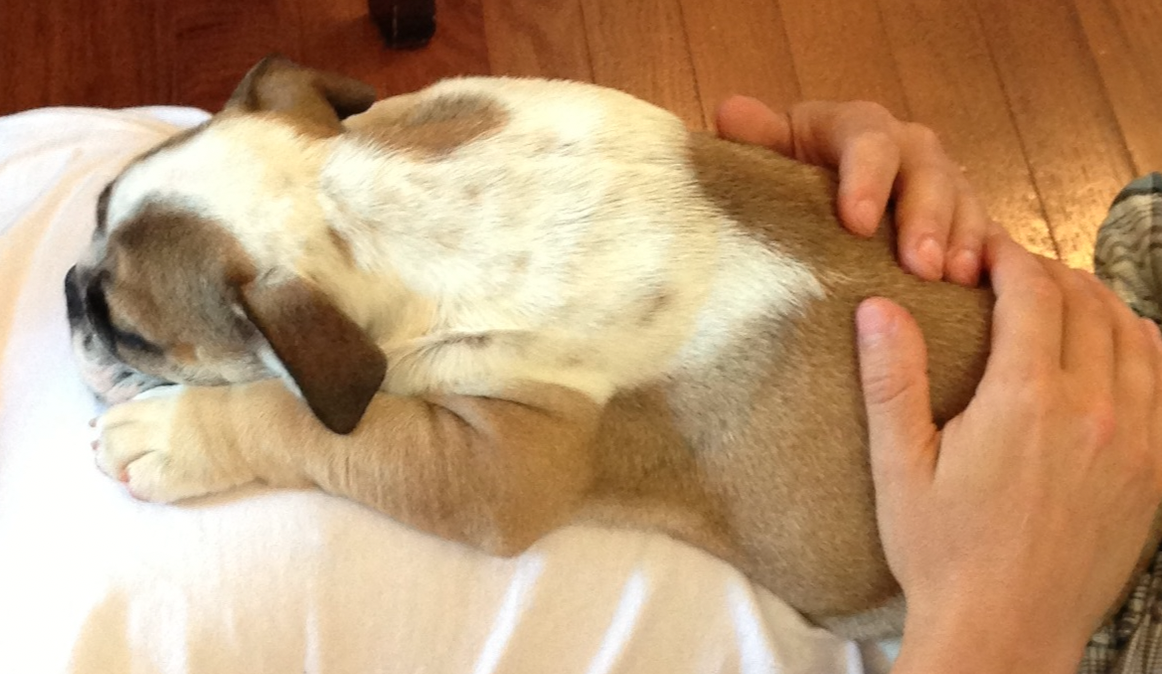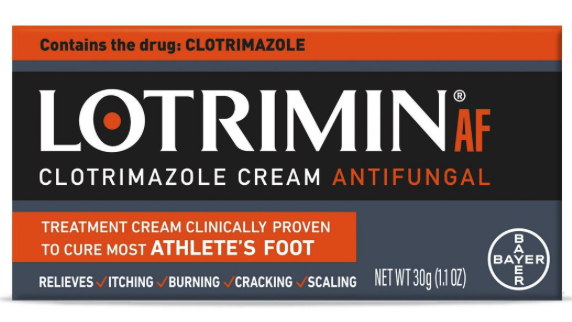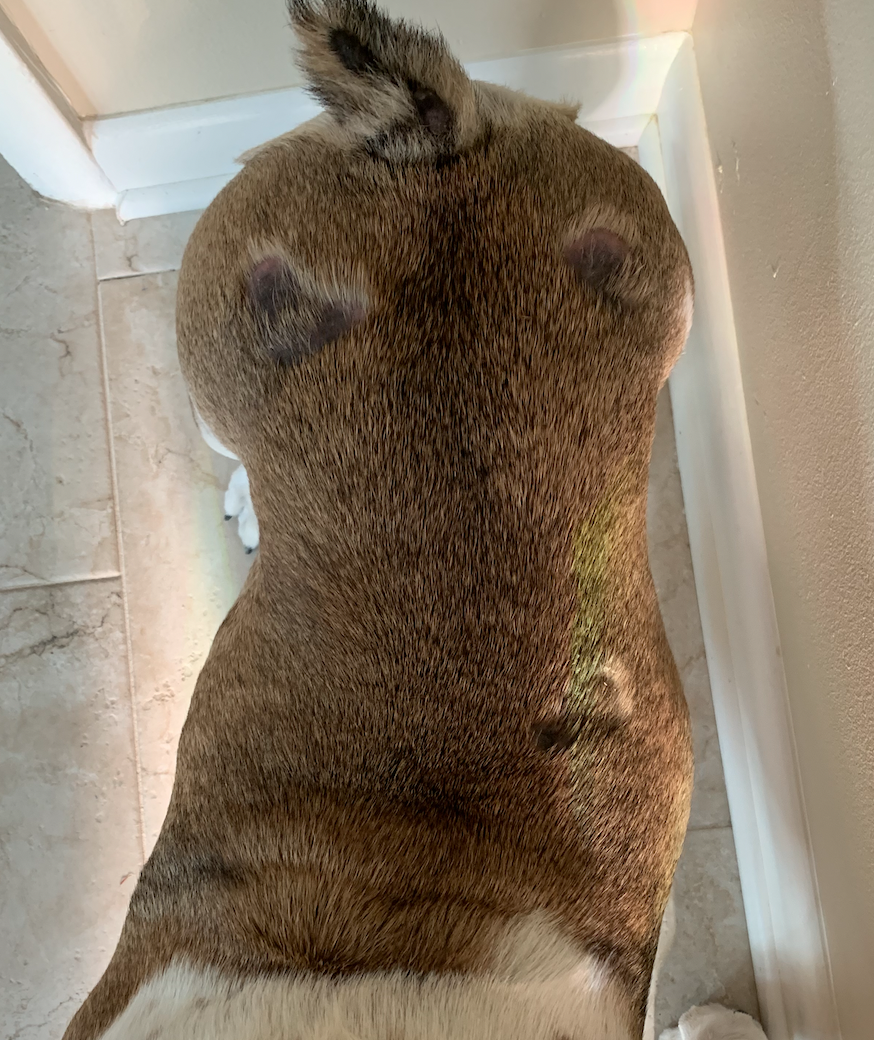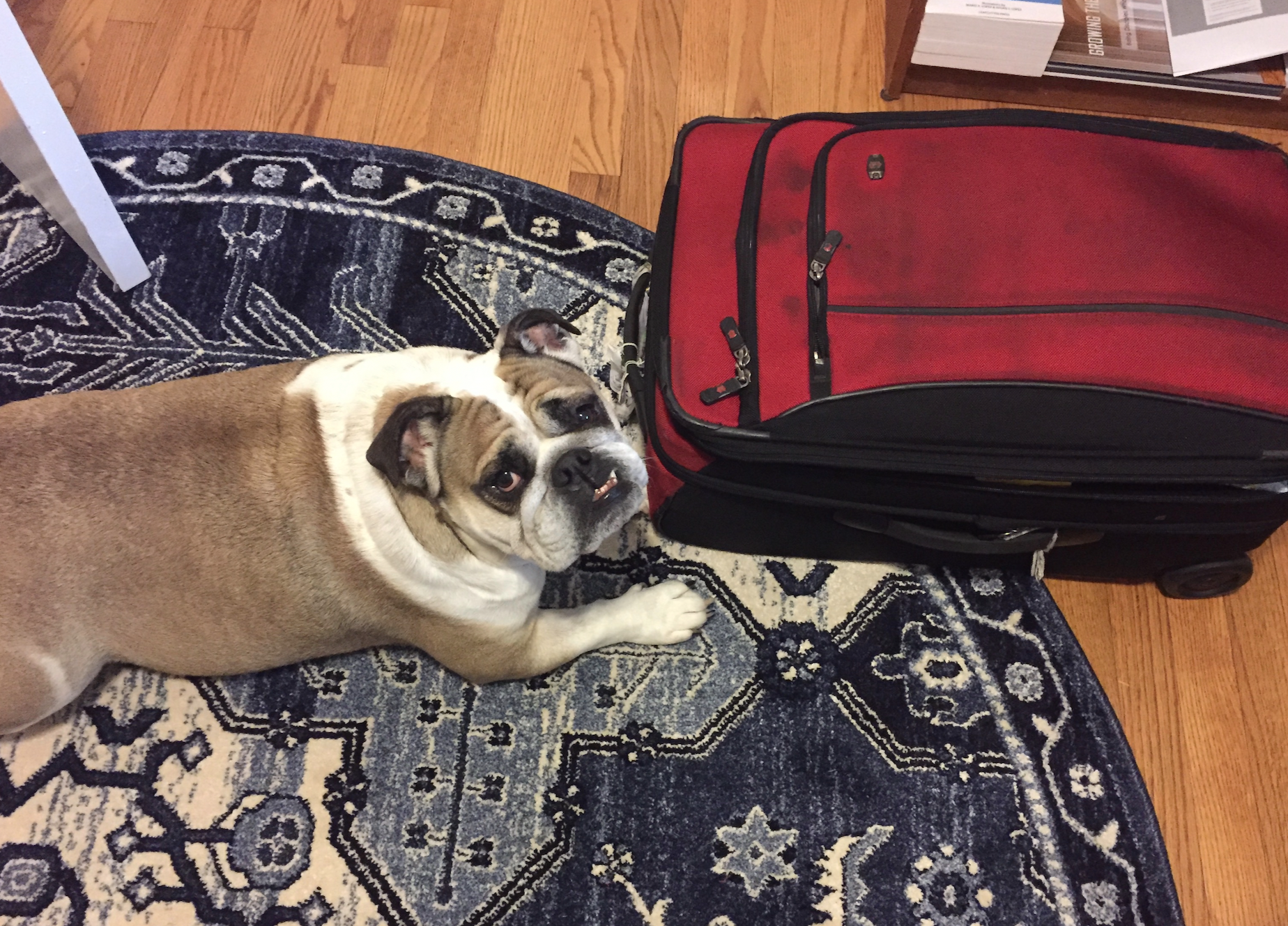
Our new puppy–after her bath

Clemmy had reddened skin, caused by yeast infection

The inexpensive and effective way to treat yeast infections on Clemmy’s skin and in her cracks

To prevent yeast from growing, we give Clemmy weekly showers with Head and Shoulders

Treated with twice daily Lotrimin and twice weekly showers with coal tar shampoo. A lot of work, but far less expensive than it could have been. And it worked.

The WORST thing I can do to her
It was almost eleven years ago when we welcomed a bulldog puppy into our family. Such a cute little thing, even if she was rather dirty and feverish. Much of that story is here. Then, began the learning. As a first-time dog owner, I had to figure out what Clemmy was telling me and how to tell her what I wanted. But I also had to learn how best to care for this little rescue.
The first thing I noticed was that Clemmy was pink. Her belly, her folds, her chin. As a microbiologist, I suspected this was not the way it should be. It wasn’t. The clue? She stank! Bulldogs have pretty bad immune systems, and their folds often become infected with yeast. The vet in California prescribed expensive creams and special doggy shampoos. But the best thing? Athlete’s foot cream (Lotrimin) to treat the folds and Head and Shoulders for Clemmy’s weekly bath. Seriously! No more yeast infections.
When we first had our bulldog, we lived where the weather was lovely, so we put in a dog door so Clemmy could go out at will. Then I discovered something else. Bulldogs cannot regulate their temperatures. If the house dipped to below 60 at night, she did not do well. And Clemmy could not cope with anything over 80. In those temperatures, we closed the dog door and just played inside instead of taking a walk.
Of course, we also learned the bulldogs need a lot of sleep, and they have a limited tolerance for sustained activity. Even as a puppy, Clemmy would refuse to walk more than a mile. Her play was pretty rough, but it was short. Five-minute bursts at the most. Her walks soon decreased to around the block. A neck injury resulting from a vet in Texas using a choke collar means Clemmy can no longer play tug of war (her favorite). Now she will only walk two driveways away and back. To keep your bulldog healthy, don’t force them to do more than they want. And always use a harness, not a collar.
What about food? Clemmy thinks she never gets enough! Since being overweight isn’t good for bulldogs, we only give her half a cup of Blue Buffalo in the morning and a cup in the evening. That means she can also enjoy a little bit of people food: broccoli, apple, banana, green beans, rice, and meat. And she can lick our plates! We don’t change the dog food, since we found that can lead to diarrhea. Never a good thing. We also don’t use the expensive stuff. After all, bulldogs should live between 8 and 10 years. Clemmy is nearly 11. Nuff said.
Finally, we learned that Clemmy has anxiety. Seriously! If we raise our voices, she does all in her power to calm us. If we show fear, she might bite the person who she perceives as threatening us. If she sees a suitcase in the hall, she takes to her bed and mopes. When we adopted a duck, she didn’t like it at all! And if it is dinner time, she pants herself into a frenzy. Fortunately for her, our home is pretty calm. If yours is not, it might be worth considering whether a highly-strung dog is best.
But Clemmy is getting old. Sometimes she is pretty stiff; then we give her Rimadyl. Get it on line; it’s cheaper. Her muzzle is going gray, but she’s not vain, so that doesn’t matter. Clemmy has an autoimmune disorder of her eyes, which means they’re dry. A common bulldog issue. Human lubricant eye drops two or three times a day work well. And, just recently she had a bout with fungal infection of her skin. Lotrimin twice a day. It worked!
So, are bulldogs expensive? Well, if you buy them, yes. We didn’t. What about to maintain? Sometimes. But, by using the above hacks, your dog won’t cost as much as it might. And, hopefully, you’ll be able to enjoy your bulldog for as long as we have our Clemmy.
(Please note, I am a microbiologist and immunologist, not a veterinarian. This is my experience, not medical advice!)

Recent Comments